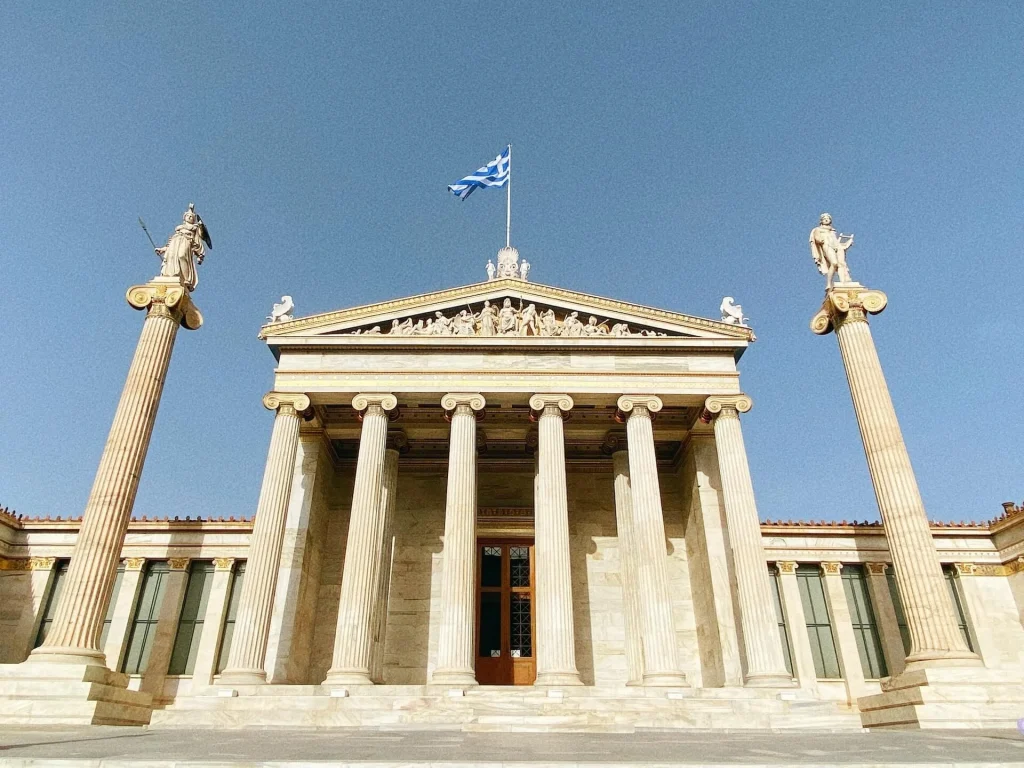Considered one of the quintessential styles of architecture worldwide, the Neoclassical style is a beloved design praised for its refined simplicity and imposing presence. While there have been many premium homes and historical buildings built in a Neoclassical scheme, a question remains for some people as to what exactly is Neoclassical architecture in the first place.
The Neoclassical style can trace its roots as far back as the early 18th century, specifically during the revival of Greek and Roman classical architecture. This architectural renaissance was inspired by two key events, the first being the growing disillusionment at the Baroque style which was prevalent during the time period, and the discovery of Pompeii during the 16th century. In combination with the aesthetic appeal of the structural designs of ancient Greece and Rome and their symbolic representation as the progenitors of democracy, it was no wonder that the Neoclassical style was adopted by many nations around the world, especially for the construction of government buildings.
For those who aren’t satisfied with just the brief history lesson regarding the origins of Neoclassical architecture, read below for additional details.

What Are The Distinct Features of Neoclassical Architecture?
When a person thinks of Neoclassical buildings, they may often imagine specific prominent features such as their iconic columns and arches. While these are indeed the most recognizable aspects of the Neoclassical style, there is more to it than the aforementioned characteristics which completely define the said architectural design.
In terms of the classical elements which make up Neoclassical architecture, the fundamental ones are the following: the usage of symmetry and grand scale, evenly-spaced windows of varying styles with double-hung sashes, detailed doorways, and the addition of porticos, columns, and pediments. The columns themselves can come in three distinct details which are the Doric, Ionic, and Corinthian, the former being noted as the simplest and the latter the most intricate. Furthermore, Neoclassical architecture itself is divided into three primary sub-types: the Classical block, the Temple style, and the Palladian style, all of which have their own unique beauty that most can admire.
While the use of a white exterior is commonplace for Neoclassical architecture to emulate the marble works of ancient Greece and Rome, other colors have been used to compliment it, both recently and in the past.
The Influence of Neoclassical Architecture on Modern Architecture
True Neoclassical buildings may not be as popular these days as they were in the past, but echoes of their prominence can still be found in several of the architectural styles that are used in the contemporary period. With how impactful Neoclassical architecture was in many societies throughout the world, it is no surprise that some of its components are still utilized by architects these days in their own works.
The implementation of columns, porticos, and other essential facets associated with Neoclassical architecture for example, have been observed in various modern buildings, particularly in important public infrastructures such as town halls, libraries, and such. Due to the said style’s association with elegance and class, one can also frequently spot Neoclassical traits in residential properties specifically tailored for the upper-middle class, like in the premium homes built by noteworthy real estate developers like Crown Asia in the Philippines. When it comes to constructing buildings of large dimensions, it is sometimes the Neoclassical style which some architects are inspired by because of its established history with that particular aspect.
Despite the continuing development of architecture within the following years into newer and more original concepts, the effects of Neoclassical architecture will still continue to be felt for generations to come.
Famous Examples of Neoclassical Architecture in the Philippines
Given the popularity of Neoclassical architecture in the Western world, it is unsurprising that there would be many buildings in the Philippines that would’ve been constructed in the classical style. For one to truly comprehend what exactly Neoclassical architecture is, being aware of some famous places in the country based on the said style can significantly help with this process.

Photo from sothebys.com
One of the most prominent examples of Neoclassical buildings in the Philippines is the National Museum of the Philippines, specifically the central museums found in Manila, which were once government buildings that housed the nation’s congress and the Departments of Finance and Tourism. Within the Diliman campus of the University of the Philippines, there are also several notable Neoclassical structures, such as the Quezon Hall, Ang Bahay ng Alumni, and the other halls named after influential Filipino figures. Further examples of Neoclassical architecture outside of the capital also include the Compañía Marítima Building in Cebu and the Porta Mariae in Naga City.
With how much foreign influence the Philippines has experienced throughout its history, it is no wonder that Neoclassical architecture would be a part of Filipino architecture culture, highlighting its importance.
In conclusion, Neoclassical architecture is known as one of the old architectural styles characterized by its Greek and Roman-inspired aesthetics. It is not only the cornerstone of modern architecture as seen by its prevailing influence, but a relatively recent part of Filipino history and culture as well.
To those who are looking to own one or more premium homes in Bacoor which possess Neoclassical elements, an excellent choice would be the properties for sale in Crown Asia’s Citta Italia.
Located in the heart of Bacoor City along Molino Boulevard, Citta Italia is one of the many prime master-planned communities developed by Crown Asia in South Luzon. Given its strategic position, the Italian-inspired Citta Italia is not only designed by its architects to be visually captivating for its present and future residents but also convenient when it comes to commuting to Metro Manila for work or leisure. As part of Crown Asia’s high standards, Citta Italia also comes with its own set of exclusive amenities for only the best suburban living experience, with its function area particularly using some aspects associated with Neoclassical architecture.
For those who are looking for their forever home in Bacoor City, schedule a visit to Citta Italia and attend an open house tour as soon as possible.


